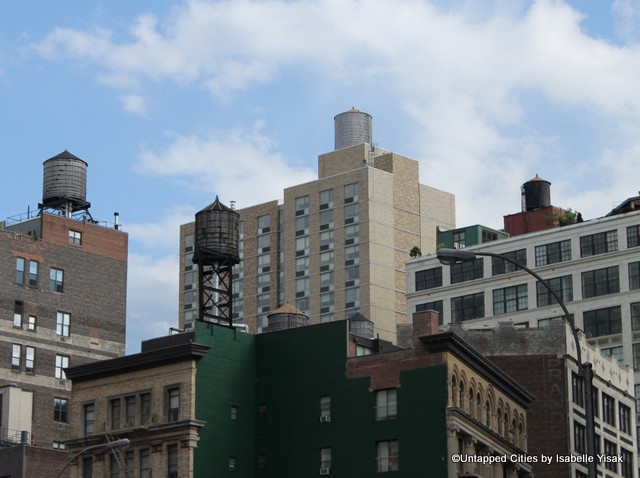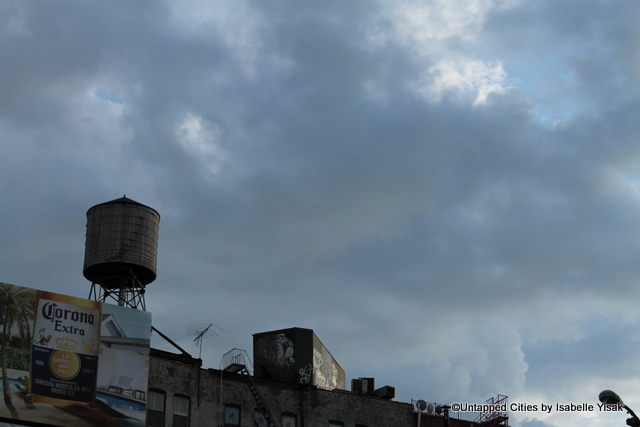Despite the rustic wooden exterior, watertanks tanks can hardly be considered outdated. The majority of them are still in use due to the unique benefits that the wooden shell provides.
Past
According to Kate Ascher, author of The Works: Anatomy of a City, as the city underwent vertical expansion in the late nineteenth-century, the need for technological innovation in the realm of water supply soon became evident. Prior to the escalation of skyscrapers and multi-storied buildings, the water would naturally rise to the height of six floors due to the natural pressure of the street mains system. However, with increasing urbanization, a solution quickly arrived — the rooftop water tank.
In short, the municipal water supply system delivers water to a basement pump which then sends the water to the roof. There, rings made of galvanized steel encircle the barrel and apply pressure in order to prevent leakage. Without any type of adhesive, these tanks can last 30-35 years.
Present
Approximately 10,000 to 15,000 tanks reside on roofs across the boroughs, and the number of wooden tanks prevails over the more modern pump systems. The enduring advantage of these decades-old tanks is that wood is a natural insulator, the tanks can easily be built on the scene and cost less than other kinds of tanks that still hold a similar amount of water.
Currently, there are only three companies in the city that construct wooden water tanks: Rosenwach Tank Company, Isseks Brothers, and American Pipe and Tank. All are family run businesses, the first two have been in business for over one hundred years.
So why the fascination? New York is not the only city to possess rooftop water tanks, but it is certainly the only one I have encountered where the structure is ubiquitous. Other countries like Australia are also promoting the use of water tanks because of weather conditions. Cities are a man-made creation and these water tanks are just one sign of how people have shaped their surroundings to suit their needs and bring forth materials that are necessary for increased livability.
Future
Next spring, the water tanks will be undergoing a temporary make-over as part of an awareness campaign. The Water Tank Project will launch its public art initiative: the transformation of New York City rooftop water tanks into artworks. The project’s intention is to raise attention about water scarcity by having artists, notable figures in music and science, and local public school students all contribute their designs.
More about the Water Tank Project can be found here.
Get in touch with the author at @iyisak







